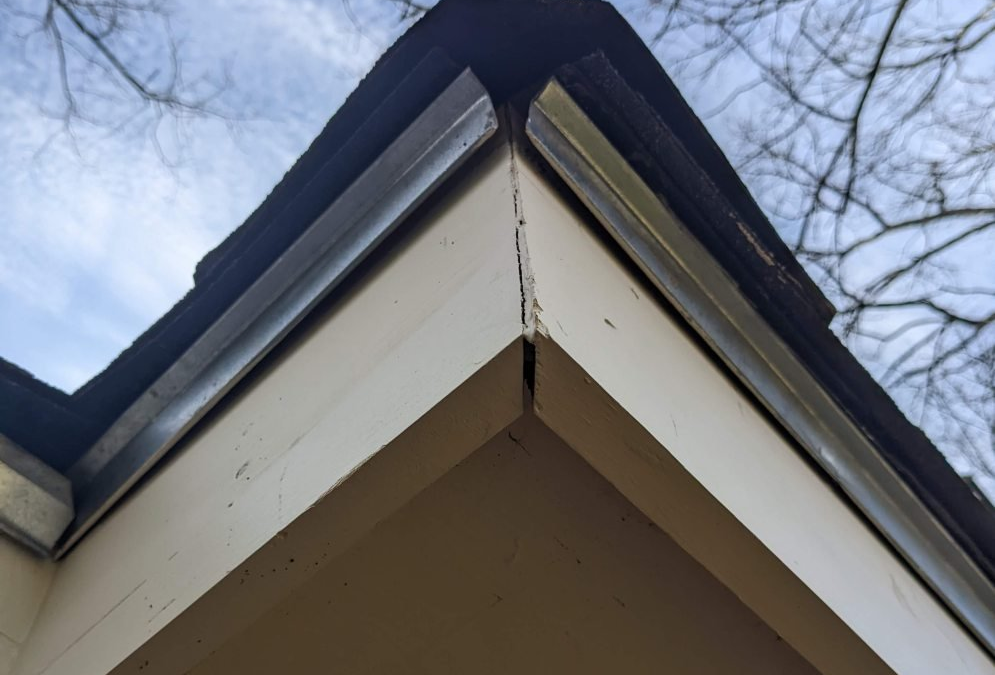When it comes to safeguarding your home from water damage, every component of your roofing and gutter system plays a crucial role. One often-overlooked feature is the gutter drip edge. At Tiger Gutters, a trusted name in Memphis, TN, we believe in empowering homeowners with knowledge about their gutter systems. In this blog, we’ll explore what a gutter drip edge is, its importance, and how it works to protect your home.
What Is a Gutter Drip Edge?
A gutter drip edge is a metal flashing installed along the edges of your roof. Its primary function is to direct water away from the fascia and into the gutter system, ensuring water flows properly off the roof. Made of materials like aluminum, galvanized steel, or copper, drip edges are designed to withstand the elements and prevent water from seeping under shingles or behind the gutters.
How Does a Gutter Drip Edge Work?
The drip edge extends slightly beyond the roofline, creating a small overhang. When rainwater or melting snow flows off the roof, the drip edge channels it directly into the gutters rather than allowing it to run down the fascia board or behind the gutters. This simple yet effective design minimizes the risk of water infiltration that could lead to structural damage, mold growth, or rot.
Benefits of Installing a Gutter Drip Edge
1. Protects the Fascia and Roof Decking
Without a drip edge, water can seep under the shingles and into the fascia or roof decking, causing rot and other damage over time. A properly installed drip edge creates a barrier that directs water where it belongs.
2. Prevents Water Damage to Your Home
By ensuring that water flows into the gutter system, a drip edge helps prevent costly repairs associated with water damage, such as leaks, wood rot, and foundation issues.
3. Enhances Gutter Performance
A drip edge ensures that water enters the gutters cleanly, reducing the chance of overflow or water bypassing the system entirely.
4. Improves Aesthetic Appeal
Beyond its functional benefits, a drip edge adds a clean, finished look to the edges of your roof. Available in various colors and materials, it can complement your home’s design.
Types of Gutter Drip Edges
There are three common types of drip edges:
Type C (L-Shaped)
This is the most common style, featuring a simple L-shaped design that fits under the shingles and over the fascia.
Type D (T-Style)
Type D has a slightly curved profile, making it particularly effective at directing water into the gutters.
Type F (Drip Edge with Extended Flange)
This type is ideal for situations where shingles don’t extend far enough over the roof edge, offering extra coverage to ensure proper water flow.
Signs Your Home May Need a Drip Edge
If your home doesn’t already have a drip edge installed, or if the existing one is damaged, you may notice:
- Water stains on the fascia board.
- Leaks in the attic or near the edges of the roof.
- Overflowing or underperforming gutters.
- Signs of rot or mold near the roofline.
Addressing these issues promptly can prevent further damage and ensure your home remains protected.
Local Climate and Its Impact on Gutter Drip Edges in Memphis
Memphis experiences a humid subtropical climate, with hot summers and wet winters. Heavy rainfalls and occasional storms make a well-functioning gutter system essential. A properly installed drip edge is especially crucial in this environment to handle the high volume of water and prevent moisture-related issues common in the region.
Installing a Gutter Drip Edge
While the process of installing a drip edge might seem straightforward, it requires precision to ensure it functions correctly. Proper installation involves lifting the shingles, placing the drip edge snugly against the roof decking, and securing it with nails or screws. It’s important that the drip edge overlaps sections to create a seamless water barrier.
Maintenance Tips for a Gutter Drip Edge
To ensure your drip edge continues to perform effectively:
- Inspect it regularly for signs of damage, such as rust or bending.
- Keep your gutters clean and free of debris.
- Ensure the shingles and fascia near the drip edge are in good condition.
Conclusion
A gutter drip edge might seem like a minor detail, but it plays a significant role in protecting your home from water damage. By directing water away from vulnerable areas, it preserves the integrity of your roof, fascia, and gutters. At Tiger Gutters, we’re proud to support Memphis homeowners with resources and information to keep their homes in excellent condition. By understanding the importance of components like the gutter drip edge, you can make informed decisions about maintaining and enhancing your property.

